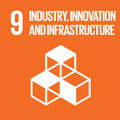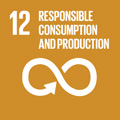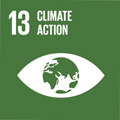- Docente: Alessandro Ceruti
- Credits: 6
- SSD: ING-IND/15
- Language: English
- Moduli: Alessandro Ceruti (Modulo 1) Antonio Bacciaglia (Modulo 2)
- Teaching Mode: In-person learning (entirely or partially) (Modulo 1); In-person learning (entirely or partially) (Modulo 2)
- Campus: Forli
-
Corso:
Second cycle degree programme (LM) in
Aerospace Engineering (cod. 5723)
Also valid for Second cycle degree programme (LM) in Aerospace Engineering (cod. 5723)
-
from Sep 18, 2024 to Dec 04, 2024
-
from Sep 19, 2024 to Dec 05, 2024
Learning outcomes
The student gains a clear understanding of the design process used in the aerospace industry to develop new products. In detail, the student knows the proper methodologies to carry out a synthetic approach to the design of new vehicles, focusing the attention on the conceptual and preliminary design methods and tools useful for the aeronautical products development.
Course contents
Notes on the management of the design process in civil aeronautics. Impact on the design methodologies of EASA regulations (CS-VLA, CS-23 and CS-25 for fixed wing, CS-27 and CS-29 for rotary wing). Main concepts relating to the management of design and airworthiness in the aeronautical sector (DOA, POA, Part 145); main professional figures involved in the aircraft design process. Notes on the design management in the space sector according to ESA regulations.
Tools for synthesis (multidisciplinary optimization, trade-off studies) and analysis (CAD, CFD, FEM, numerical models) in the aerospace sector. Collaborative virtual environments for aerospace project management and concept of digital twin.
Methods for the conceptual design of civil transport aircraft and general aviation aircraft; impact of architectures, geometry, propulsion system, aerodynamic and structural characteristics of aircraft on performance, flight quality, operating costs of aircraft.
Methods for the conceptual design of seaplanes, LTAs (airships, balloons and hot air balloons), non-traditional configurations of civil aircraft, electric aircraft, helicopters, propellers.
Exercises on examples of conceptual aircraft designs, digital modeling of aircraft and their parts in CAD and in collaborative virtual environments, development of flight models and performance validation.
Readings/Bibliography
Daniel Raymer, Aircraft Design: A Conceptual Approach, Sixth Edition, ISBN (print): 978-1-62410-490-9, September 30, 2018.
James DeLaurier, Aircraft Design Concepts: An Introductory Course, Taylor & Francis Ltd, 2022.
Leland M. Nicolai, Grant E. Carichner, Fundamentals of Aircraft and Airship Design, AIAA Education Series, 2010.
Snorri Gudmundsson, General Aviation Aircraft Design: Applied Methods and Procedures, Butterworth-Heinemann, September 3, 2013.
Teaching methods
The course includes lectures, and exercises in which students have the opportunity to apply the concepts learned. Digital tools to support conceptual design are also widely presented, such as CAD, CFD, FEM, models in Simulink and Matlab environments, Flight simulation, Geometric modeling in virtual reality to support the aerospace digital modelling.
Assessment methods
The students are divided into groups, and are tasked with the development of an aircraft project, to be carried out according to the methodologies introduced during the lectures: the project involves the sizing of an aircraft, its CAD modelling, the development of the mathematical model and the performance verification through tools developed in the Matlab environment and Virtual Reality flight simulator. During the exam, in addition to the presentation of the project carried out, students are asked to answer questions on the subjects introduced along the lectures. Given the applicative nature of the course, 16 points are assigned to the discussion of the project, while 14 points are assigned to the two questions, 7 for each one.
Teaching tools
SolidWorks CAD software with integrated CFD and FEM module for conceptual design; Matlab and Simulink codes; Virtual Reality flight simulator, virtual environments.
The slides used in lessons are uploaded to the virtuale.unibo.it website and made available to students.
Office hours
See the website of Alessandro Ceruti
See the website of Antonio Bacciaglia
SDGs



This teaching activity contributes to the achievement of the Sustainable Development Goals of the UN 2030 Agenda.
